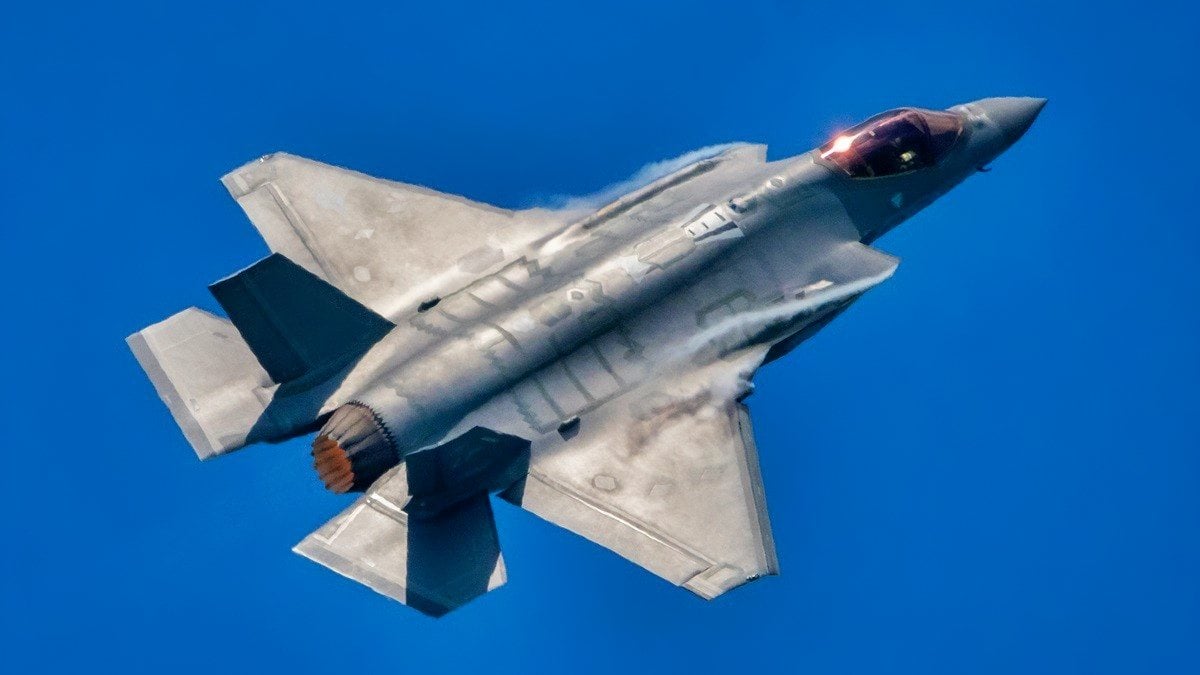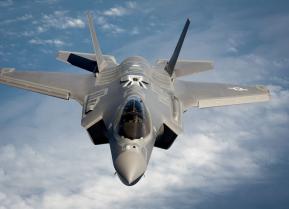The F-35 is a Nuclear Bomber
The Lockheed Martin F-35 Lightning II is a stealth multirole fighter that can start a nuclear war if needed.
The Lockheed Martin F-35 Lightning II is a stealth multirole fighter that can perform both air superiority and strike missions. It is also able to provide electronic warfare and intelligence, surveillance, and reconnaissance capabilities.
The conventional takeoff and landing (CTOL) F-35A that is operated by the United States Air Force – as well as by more than a dozen allied and partner nations – was developed to replace the aging fleet of F-16 Fighting Falcons and A-10 Thunderbolt IIs. It can conduct air and ground attacks, carrying a variety of ordnance and bombs.
The F-35A can also operate as a tactical nuclear bomber.
Certifying the F-35
In 2021, a pair of Lightning II aircraft successfully released B61-12 Joint Test Assemblies (JTAs) during the first Full Weapon System Demonstration, completing the final flight test exercise of the nuclear design certification process. The tests mimicked a real-world tactical gravity nuclear weapon release at the Tonopah Test Range in Nevada.
Once airborne, test pilots flew to the Tonopah Test Range and released two B61-12 JTAs from operationally realistic flight envelopes. This event was the first release of the most representative B61-12 test asset from an operationally representative F-35A, the Air Force announced at the time.
Air Combat Command's 422nd and 59th Test and Evaluation Squadrons, based at Nellis Air Force Base, Nev., flew the final flight test exercise for the aircraft to receive nuclear design certification. The test data was subsequently reviewed by the Department of Defense (DoD) and Department of Energy (DoE) to ensure the F-35A and B61-12 JTAs performed correctly.
The test event was led by a collaborative effort between the Air Force Nuclear Weapons Center, F-35 Joint Program Office, Sandia National Labs, and several Headquarters ACC staff directorates.
However, as the Air Force noted, not all aircraft will become nuclear-capable upon full certification in support of real-world operations. Only those units with a nuclear mission will be given the hardware and manpower necessary to configure and maintain nuclear-capable F-35s.
"It makes our potential adversaries think more about their game plan before launching it," Air Combat Command deputy director for strategic deterrence Lt. Col. Douglas A. Kabel told Air Force Magazine following the successful demonstration. "It can get closer to, further inside a combat area that may otherwise be impossible for non-stealth assets."

The B61-12 – a Tactical Nuke
The B61-12 is a refurbished, consolidated version of earlier gravity bombs, including the B61-3, 4, and 7. It can offer four blast options measuring from 0.3 to 50 kilotons — more than double the estimated yield of "Fat Man," the larger of two nuclear bombs the U.S. dropped in Japan in 1945 – according to the Air Force Times.
The U.S. had announced plans to produce 480 B61-12s from fiscal 2022-2025 and phase out those with much higher yields, while experts estimate the U.S. now owns 680 B61s in total, including 230 for non-strategic platforms like fighters.
In October 2023, the Pentagon further announced that the United States would pursue a modern variant of the B61 nuclear gravity bomb, designated the B61-13, pending Congressional authorization and appropriation.
The Department of Energy's National Nuclear Security Administration (NNSA) would produce the B61-13.

It would be deliverable by modern aircraft, possibly including the F-35A, strengthening deterrence of adversaries and assurance of allies and partners by providing the president of the United States with additional options against certain harder and large-area military targets.
Why is the F-35 a Nuclear-Capable Aircraft?
Several aircraft, including the F-15E Eagle, F-16 Fighting Falcon, B-2 Spirit, and Panavia Tornado have been or will be certified to carry the B61-12. However, the F-35 could offer advantages over the other fighters as well as the bomber.
As the B61-12 can be carried in the F-35's internal bays, the aircraft would be able to maintain its stealth, while it could still strike a ground target with greater precision than the B-2.
Kris Osborn of Warrior Maven noted, "Certainly a stealth bomber such as the B-2 or B-21, or a large nuclear-capable bomber such as the B-52 can introduce the threat of nuclear weapons. Yet these aircraft would of course have trouble maneuvering in close proximity to ground targets in highly-contested threat areas," and added, "A stealthy platform like a B-2 would rely upon its stealth properties and altitude to elude detection, yet might lack the vectoring ability and speed to introduce a lower-altitude tactical nuclear threat. An F-35, by contrast, could use stealth, speed, and maneuverability to hold otherwise unreachable targets at risk of some kind of nuclear attack."
Nuclear Weapons Returning to the UK
Currently, there are around 150 American-controlled B-61 nuclear gravity bombs stationed in Belgium, Germany, the Netherlands, Italy and Turkey. Last year, Germany announced it would replace some of its aging Tornado fighters with the F-35A to serve in the nuclear deterrence role.
Though Berlin does not have nuclear weapons of its own, as part of NATO's system of nuclear deterrence developed during the Cold War, it maintained aircraft capable of carrying U.S. atomic bombs – notably those stationed in Germany.
In August, reports surfaced that the United States Air Force would likely return its nuclear weapons to Royal Air Force (RAF) Lakenheath in Suffolk, England. A total of 110 US nuclear bombs were stored at the facility, which was rented by the U.S. Air Force until 2008.
Two squadrons of F-35A fighters have already been deployed to the base as part of a deterrence mission to confront Russian aggression.
Perhaps the threat of tactical nukes delivered by the best fighter in the world will be enough to give Moscow pause.
Author Experience and Expertise
Peter Suciu is a Michigan-based writer. He has contributed to more than four dozen magazines, newspapers, and websites with over 3,200 published pieces over a twenty-year career in journalism. He regularly writes about military hardware, firearms history, cybersecurity, politics, and international affairs. Peter is also a Contributing Writer for Forbes and Clearance Jobs. You can follow him on Twitter: @PeterSuciu.
All images are Shutterstock.


